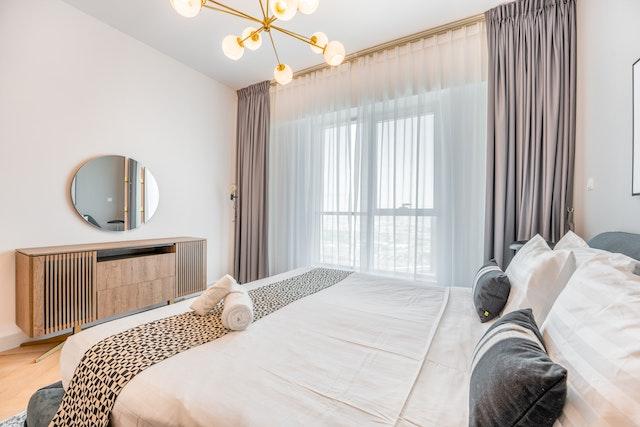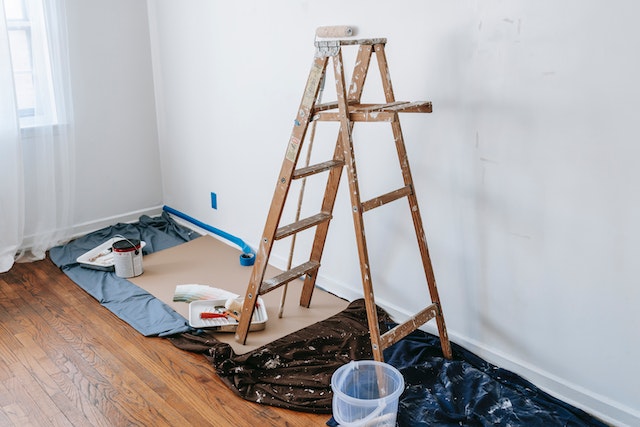
Deciding whether to allow tenants to paint your rental property can be a challenging decision for landlords.
While some tenants may view this as a way to personalize their living space, landlords often have to weigh the potential benefits against the risks and costs.
Striking the right balance between tenant satisfaction and maintaining the property’s value through regular property maintenance is essential.
This article breaks down the pros and cons of allowing tenants to paint, offers considerations for making an informed decision, and explores alternatives to meet tenant needs without compromising the long-term appeal of your property.
By the end, you’ll have a clearer understanding of how to approach this common issue. Keep reading to learn more!
Pros of Allowing Tenants to Paint
Improved Tenant Satisfaction
Allowing tenants to paint their rental unit can make them feel more at home. Personalizing their living space fosters a sense of ownership and comfort, which may lead to higher tenant satisfaction.
Satisfied tenants are more likely to renew their leases, take better care of the property overall, and help maintain the property.
This can reduce tenant turnover and associated costs, such as marketing, preparing the unit for new renters, and keeping tenants happy.
Potential for Increased Property Appeal
In some cases, tenants who choose tasteful, modern colors can actually enhance the curb appeal of your property.

A well-chosen, neutral accent wall or updated color scheme can make the space more attractive to future renters. If tenants are willing to make these improvements at their own expense, landlords may benefit without incurring additional costs.
Cost Savings for Landlords
If tenants cover the cost of materials and labor for painting, it can reduce expenses for the landlord. Instead of hiring a professional painter during unit turnover, you might find that tenants handle this aspect themselves, saving both time and money.
However, this approach works best when clear guidelines are established upfront to ensure the job meets your standards.
Cons of Allowing Tenants to Paint
Risk of Poor Quality or Unprofessional Work
Not all tenants have the skills or experience to paint properly. Poor-quality work can result in uneven coats, paint spills, or damage to other parts of the property, such as floors or trim. Repairing these mistakes can be costly and time-consuming, negating any initial savings.
Unappealing or Hard-to-Reverse Colors
Tenants may choose bold or unconventional colors that could make the unit less appealing to future renters.
Bright or dark colors often require multiple coats of primer to restore a neutral tone, leading to higher repainting costs during turnover, which can impact the turnover ratio. Some colors or finishes may also clash with the overall design of the property, reducing its marketability.

Potential for Disputes
Allowing tenants to paint without clear guidelines can lead to disagreements.
For example, disputes may arise over color choices, quality of the work, or whether the tenant is responsible for repainting at the end of the lease.
Without proper documentation in the lease agreement, these issues can escalate into legal or financial conflicts.
Considerations before Making a Decision
Your Target Market and Property Type
The type of property and the tenants you aim to attract should influence your decision. For example, high-end rental units may require a consistent, polished look that discourages tenant modifications.
On the other hand, properties catering to families or long-term renters might benefit from offering a degree of personalization. Understanding your target market’s preferences can help you set appropriate policies.
Lease Agreement Provisions
If you decide to allow tenants to paint, it is essential to include clear terms in the lease agreement. Outline approved color palettes, quality standards, and whether tenants are required to restore the original color before moving out.
This documentation helps prevent misunderstandings and provides a legal basis for enforcing the rules.
Inspection and Approval Process
Establishing an approval process for painting projects can help maintain control over the outcome and ensure it aligns with regular property inspections to safeguard the property's condition.

Require tenants to submit their color choices and plans for approval before starting. Periodic inspections during the project can ensure the work meets your standards and aligns with the top amenities of the property, preventing any long-term damage.
Alternatives to Allowing Painting
Temporary Decoration Options
If you're hesitant to allow painting, suggest alternatives like peel-and-stick wallpaper, removable decals, or hanging art.
These options let tenants personalize their space without making permanent changes, are renter-friendly, easy to install, and can be removed without damage. Landlords can also recommend durable, easy-to-remove brands to ensure a seamless solution for both parties.
Compromise Solutions
Allow tenants to paint a single accent wall rather than the entire unit, or limit painting to certain rooms such as bedrooms or living areas.
This gives tenants some freedom while minimizing the impact on the property. Additionally, landlords can require that tenants agree to repaint the walls in the original color before moving out.
Such compromises provide tenants with a sense of personalization while safeguarding the property's marketability for future renters.
Bottom Line
Allowing tenants to paint your rental property has both benefits and drawbacks. On the one hand, it can boost tenant satisfaction, improve the property’s appeal, and reduce costs if handled correctly.
On the other hand, it poses risks such as poor-quality work, unappealing color choices, and potential disputes. Careful consideration of your target market, clear lease provisions, and an inspection process can help mitigate these risks and make an informed decision.
For landlords seeking guidance on tenant management, lease provisions, or property maintenance, Mark Thomas Properties Property Management offers comprehensive property management services.
Our team specializes in creating solutions that protect your investment while keeping tenants happy. Contact us today to learn how we can help manage your rental properties effectively and ensure your peace of mind.
